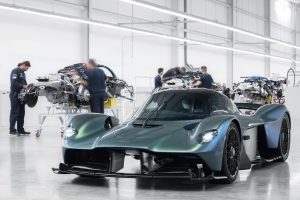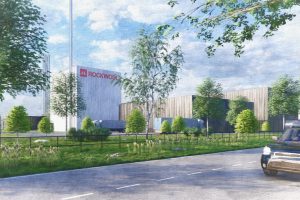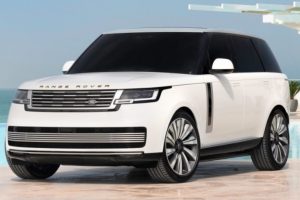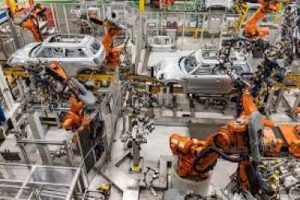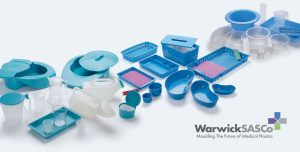SPECIAL REPORT: Jaguar Crossover is no commercial folly

IT is testament to the breadth of ambition being displayed by Jaguar Land Rover these days that it is prepared to commit to a new model which seemingly poses the greatest commercial threat to its own product base.
On the face of it, Jaguar producing a 4×4 when its own stablemate already offers arguably the best product in the marketplace seems to make little commercial sense.
Where were all the hard-nosed accountants when such a preposterous decision was made – relaxing on a nice beach somewhere? Surely there can be no sound commercial argument for such a folly.
And even if there were, why not simply slap a Jaguar badge on a restyled Evoque rather than commit yourself to investing billions in a new product development programme?
But such a half-hearted solution simply won’t do for Jaguar Land Rover these days; if it is going to produce a new model it wants to offer its customers the best available option.
Also, when you examine the concept further you begin to realise that the idea of a Jaguar Crossover makes strong financial sense.
While not a priority to drivers in the UK, Jaguar has already dabbled in the 4×4 sector by producing all-wheel-drive versions of its XF and XJ for export markets such as the United States.
The reaction has been positive, indicating to JLR that there could be a strong market for a new crossover rich in Jaguar’s sporting pedigree. And, when your stablemate has such a strong off-road heritage you’d be stupid not to tap into its specialist knowledge.
All of a sudden the costings for the new vehicle aren’t quite so ridiculous as you might think.
The facilities for the production of the new model are already in place at the Lode Lane plant in Solihull. JLR has spent the past 18 months installing a new all-aluminium bodyshop for the production of its new XE sports saloon, which goes on sale in the spring.
Back in the summer of 2013, JLR was stressing the diversity of vehicles that could be produced using the all-aluminium architecture, such as a four-seater sports crossover – then dubbed the C-X17.
The XE bodyshop mirrors that used for the new Range Rover and the robots which fasten together that flagship product are also busy assembling the new Range Rover Sport.

Also, powerplants for the new XE are being produced at the firm’s new £500m Engine Manufacturing Centre just up the road at the i54 business park, outside Wolverhampton.
If the new Ingenium units are being delivered for the XE then they can just as easily be accommodated into a new SUV.
Convinced yet?
Well, all the arguments over whether JLR should or should not bother with an SUV are now academic – it has taken the decision to put the concept into production and all efforts will now be focused on making it a success.
Design guru Ian Callum had this to say: “We received such an overwhelmingly positive response to the C-X17 concept car last year that we just had to make it a reality.
“The Jaguar F-PACE, inspired by the F-TYPE, represents a perfectly judged balance of performance, style and practicality. It offers a unique combination of Jaguar sports car inspired exterior design, fused beautifully with a thoroughly practical and spacious luxury interior. The F-PACE is our family sports car.”
JLR says the F-PACE will feature class-leading interior space and exceptional on-road dynamics with five-seat practicality.
“It will encapsulate everything that Jaguar stands for: beautiful design, precise handling, a supple ride, luxurious interior finishes and cutting-edge technology,” the firm said in its announcement.
Speaking at the Detroit motor show, Andy Goss, Jaguar Land Rover Global Sales Director, said: “In 2015 we will celebrate Jaguar’s 80th year. We have started it by announcing our first performance crossover which we consider to be the ultimate practical sports car – a car that builds on the marque’s founding ideals of Grace, Pace and Space to become one of the most innovative Jaguars we’ve ever developed. The F-PACE has now begun its engineering and development testing programme ahead of the new model going on sale in 2016.”
The production of the new F-Pace will also have added benefits beyond the confines of JLR.
In order to deliver the concept, the company has pledged to create another 1,300 jobs, taking its workforce to 32,000 – 10,000 more than were employed just four years ago.
Applications for the new roles are now being accepted and following its commitment to enhancing employment opportunities for former service personnel in the wake of the Invictus Games, JLR is welcoming applications from military personnel who are leaving or have left the services.
Additionally, the expansion of the Solihull site is the outward expression of the continued drive to reinvigorate every aspect of the company. Today, the plant builds world-renowned vehicles such as the Range Rover, Range Rover Sport, Land Rover Discovery and is home to the iconic Defender – although production of the most company’s most identifiable vehicle will end this year after 66 years.
Added benefits are that for every thousand new jobs created at JLR, thousands more are likely to follow in the company’s supply chain.
JLR backs up each new product announcement by creating component supply deals worth billions.
The same companies which have been producing the components for the 4×4 XF and XJ variants are now busy retooling to begin supplying the new crossover.
Those already supplying the XE will be keen to maximise their business by getting involved with the F-Pace.
JLR is traditionally very loyal to its supply base and there is no reason to believe that the launch of the F-Pace won’t be anything else than good news for this vital segment of the West Midlands’ manufacturing community.


